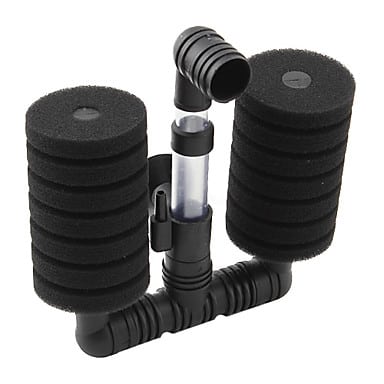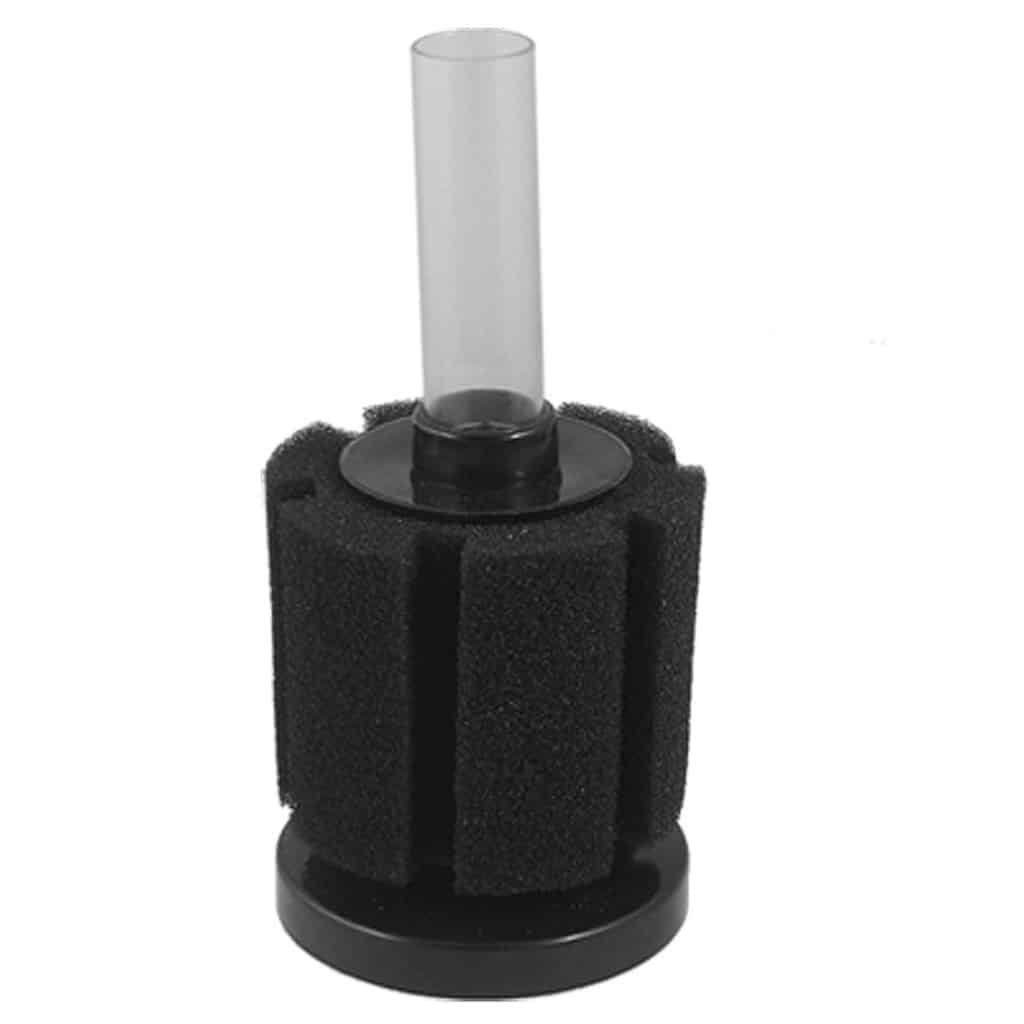I decided to set up some fry tanks under my main tank as I wish to concentrate on breeding tropheus again however didn’t want to have separate filters for each and was trying to work out the best way around this. I discovered that a lot of people us sponge or foam filters in their fish house’s which also go by the name of biochemical filters.

These are run on a standard air pump which allows multiple filters to be run from just 1 multi outlet air pump or an air pump outlet which is split using T connectors. There are twin versions like the one pictured above as well as single versions and come in various different sizes and capacities. I will not list them all here due to most being made in China and no specific brand that you should look out for.
The biochemical sponge filter works by drawing air in to the bottom (through your air pump) and out of the top which creates a syphon and sucks water through the sponges. To add to the effect you will have bubbles from the air pump coming out of the top too which of course gives much desired water surface agitation so there’s no need for a second air pump with air stone as this is taken care of too.
The best place in the UK to buy if they don’t have them in your local fish store would be on eBay and they are extremely cheap. I picked up 4 units of the twin version pictured above for £15 in total!
They are currently running an 18″x10″x10″ fry tank each and all have a Tetratec APS 50 air pump running on them. It could be that you could run multiple biochemical sponge filters from one air pump however this adds to the risk of failure – if your air pump stops working then none of your tanks will be filtered. Please be careful and ensure you use a non-return valve when connecting the biochemical sponge filter to your air pump so as to avoid any water running back down the air line if your pump fails and draining out your tank.
Believe it or not, these are very easy filters to cycle too, if you leave them in a matured tank for a week or so then beneficial bacteria from your mature tank water will soon colonise the filter sponge. Add this mature tank water to your new fry tank or tank with these filters in and away you go!
These are generally not seen as a filter you would use in a display tank or something in your living room due to the size required being a bit of an eye saw but ultimately it is of course the same principal as having an internal fish tank filter or a canister filter running on your aquarium.

It is always advisable to wash the foam (as you would with any other filter) under tank water and not straight under the tap. This is to ensure you maintain the beneficial bacteria which has accumulated within the sponge filter.
I would highly recommend biochemical sponge filters for fry or hospital tanks or if you are going down the route of a fish house or fish room with breeding racks etc. then these filters are definitely a strong option to consider.


Related Posts
Fluval 407 External Canister Filter Review
Upettools Box & Water Aquarium Water Pump Review
TMC Vecton V2 UV Steriliser Range Review